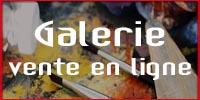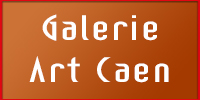Agenda
LONDRES : EXPOSITION PIERO DORAZIO "CHRONMATIC FANTASIES (1948-82)" A TORNABUONI ART
Du 24/01/2018 au 13/04/2018
Tornabuony Art, 46 Albemarle Street, LONDRES
Du 24 janvier au 13 avril 2018,
Piero Dorazio
"Chromatic Fantasies (1948-82)"
‘The images of tomorrow’s art cannot be the symbol of an outside world, recreated through fantasy and laid out in a predetermined space. On the contrary, they must be a vision of reality that is not yet visible, not yet legible.’
— Piero Dorazio, ‘Neo-neo-nuovo-new-nouveau-no’, in Metro, Milan, December 1961
In January 2018, Tornabuoni Art will host the first London solo show of Italian abstract painter Piero Dorazio (1927 – 2005) in a generation. The exhibition will span 35 years of the artist’s career, from his early, cubist-inspired paintings to his large-scale abstract explosions of colour. It will also retrace Dorazio’s influences, from Giacomo Balla to the Abstract Expressionists whom he met during his numerous stays in the USA. In his lifetime, Dorazio was widely exhibited internationally, including at MOMA New York and at the Venice Biennale, where an entire room was devoted to his paintings in 1960.
The exhibition at Tornabuoni Art will present monumental paintings from the 1970s, whose large format illustrates the influence of Dorazio’s various stays in the United States and his meetings with Robert Motherwell, Willem de Kooning and Barnett Newman there. As well as being exhibited in the iconic Responsive Eye exhibition at MOMA in 1965, with artists such as Bridget Riley, Dorazio spent the 1960s living between Italy and the US and teaching at the Graduate School of Fine Arts at the University of Pennsylvania. It is therefore unsurprising that French art historian Serge Lemoine credits Dorazio with allowing Italian art to ‘break out of its provincialism [and] reconnect with its illustrious past.’
When Giorgio de Chirico teased the young Roman artist about not knowing how to draw shadows, Dorazio replied: “I know, but I want to paint light!” Beginning with his early works as part of Gruppo Origine – founded in Rome in 1951 along with Alberto Burri, Ettore Colla and Giuseppe Capogrossi among others – Dorazio always placed light at the centre of his paintings. He diffracted it, overlaying pale and dark hues and cold and warm tones of more or less glossy paint to create an overall impression that the artist himself described as ‘an indefinable coloured light’.
Dorazio’s preoccupation with the representation of light through paint can be traced to his discovery of the work of Giacomo Balla in 1951, who had been all but forgotten after the Second World War. The artist, who was also a prominent art critic, helped re-establish Balla’s reputation, all the while following in the master’s footsteps. Dorazio’s early works from 1956 and 1958, which are part of the Tornabuoni show are indeed reminiscent of Balla’s divisionist technique, and in particular of his famous Street Light (dated 1909) as Dorazio uses contrasting strokes of light and dark colour to create the effect of a relief made of light and shadow.
Dorazio’s depiction of light becomes more distinctive and more abstract as his paintings rid themselves of any motif, accent or reference point and in 1958 become what he calls ‘luminous textures’ – interwoven wefts of light and colour. The Reticoli, as the series is known, are among the most iconic of Dorazio’s works and were exhibited in a room entirely dedicated to the artist’s work at the 1960 Venice Biennale. With a regular pattern of never-ending criss-crossing lines, the Reticoli echo the concerns of the pan-European New Tendencies movement that brought together groups of artists who favoured structure over composition, as well as simple shapes, repetition and a neutral execution. Dorazio’s work was exhibited in the movement’s founding exhibition of concrete and constructive art: Novje Tendecije in Zagreb in 1961.
With Piero Dorazio: Chromatic Fantasies (1948-1982) Tornabuoni aims to introduce to the London public one of the great painters of the Italian Post-War era, whose interpretation of colour and dedication to light and abstraction led to his being remembered in his obituary from The Guardian as a ‘member of the heroic Post-War generation, who believed that abstract art could change the world.’
 Voir toutes les actualités
Voir toutes les actualités
©2003 - 2012 Art-Culture-France - Tous droits réservés Mentions légales | Partenaires & Publicités | Plan du site | Contact







![[Alternative text]](images/pubs/galerie_acf.jpg)